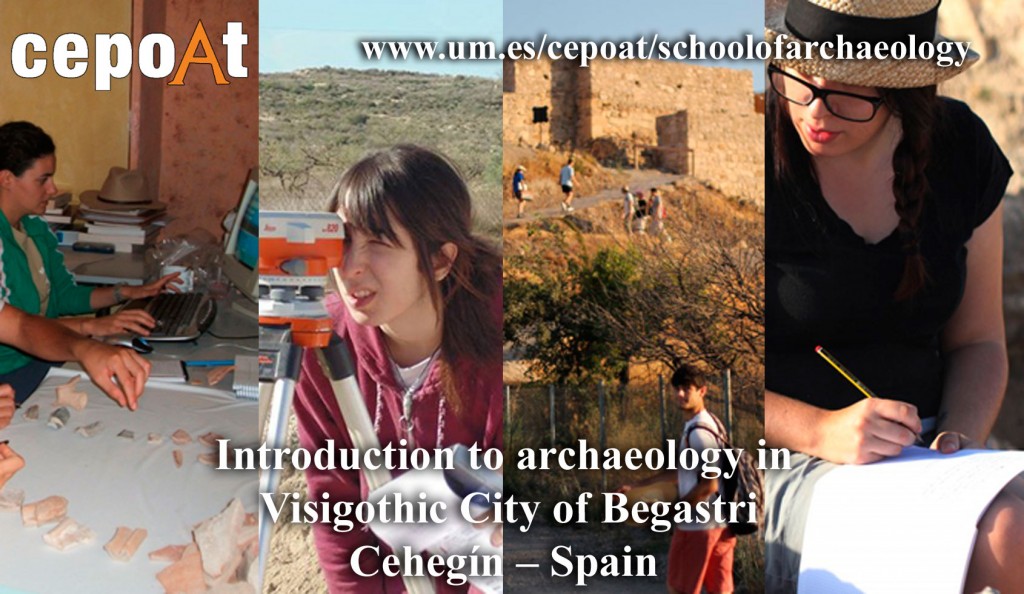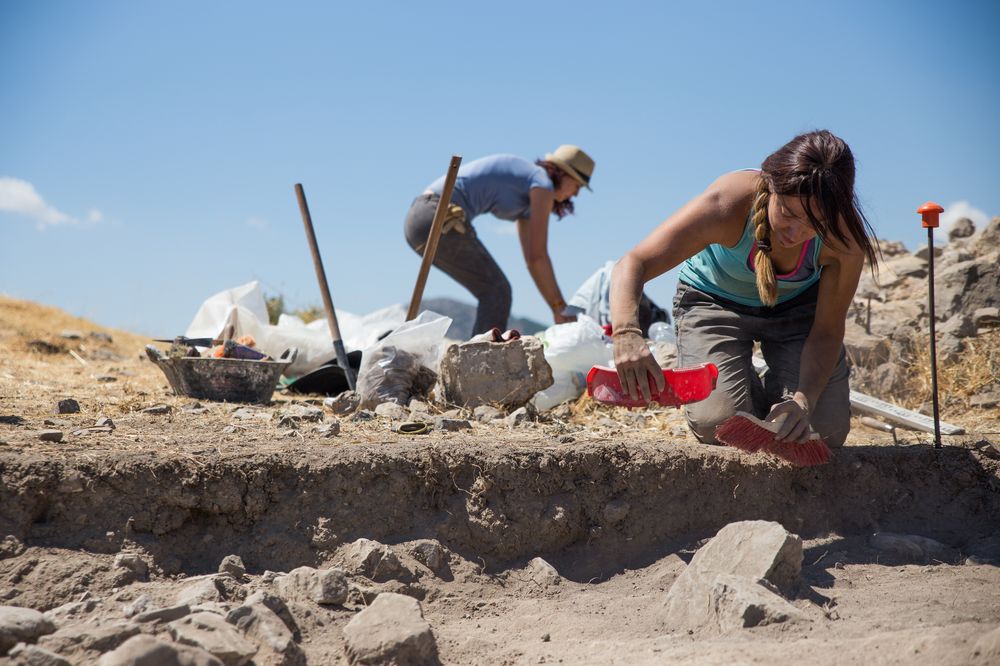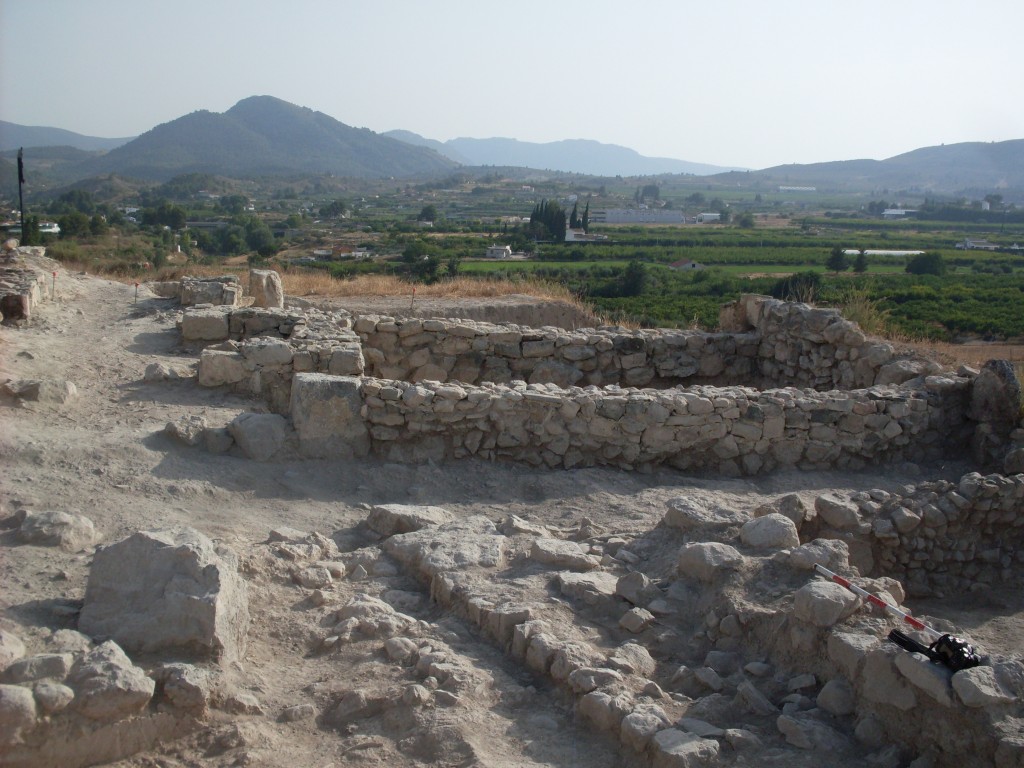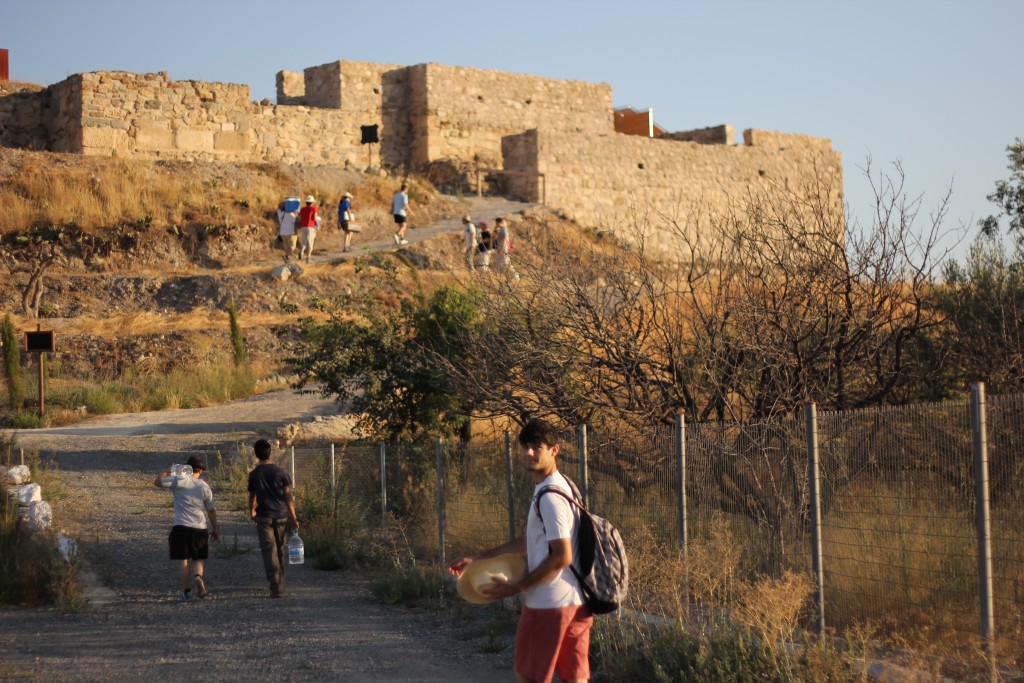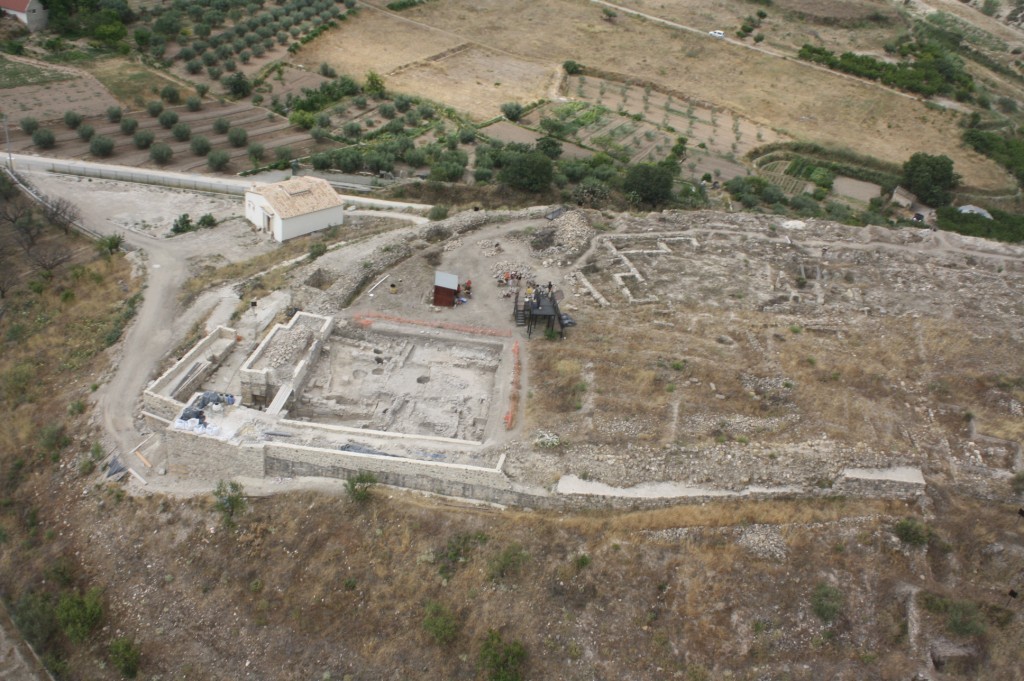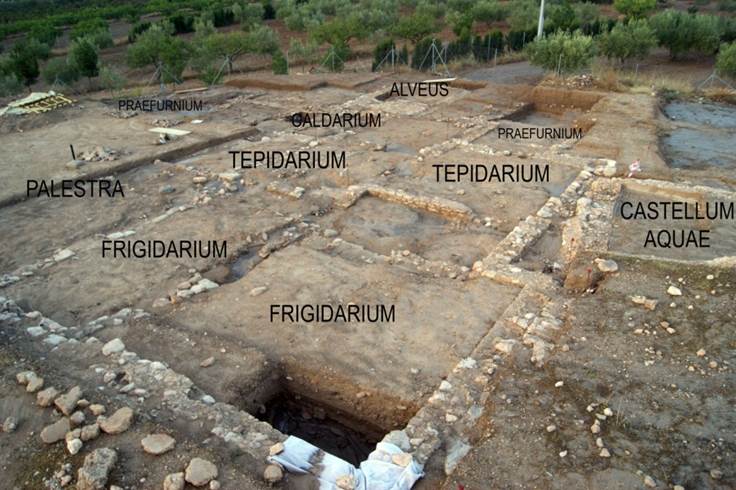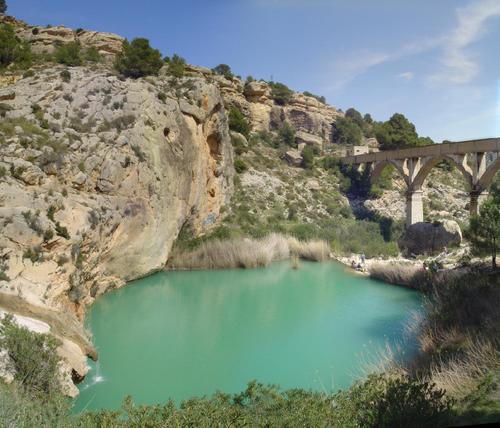Course |
Excavation |
Accommodations |
Dates & Fees |
Team |
Free time |
Seminars |
Official web |
|
Course
This course is aimed at students and people interested in archaeology who wish to participate with us in this archaelogical course at the city of Begastri, located 2km South of Cehegín, in Murcia (Spain) where you will be able to study firsthand the model of rural settlement in roman and visigothic times.
The site of Begastri has a recorded occupation and initial phases from early Iberian, passing through Roman and late Roman times, although today we are at the stage in which it works mainly is Visigothic.
In the recent years, CEPOAT has been working on this site’s development of their excavations, as a member of CEPOAT is now the director of the excavation.
The archaeology course we offer is an intensive training course in fundamentals such as Strati-graphy, GIS, photogrammetry, CAD, topography, field drawing, materials inventory, etc ..
The developed program is as follows:
1. Introduction to archeology.
1. Concept, limits and meaning of archeology.
2. Archaeology and sources: written and materials.
3. Methods and techniques: the exploration, excavation and dating methods.
2. Methods and techniques of archaeological excavation.
1.La formation of the archaeological record: General deposition processes.
2.The concept of strata and training: relative dating. Terms ante quem and post quem. The concept of strati-graphic unit. Strati-graphic relationships between units. The matrix Harris.
3.The system open area excavation and its application in different situations.
4.The data record. The daily and strati-graphic records. The field drawing and photography in the excavation.
5.La manual collection of objects. Artifacts and registration. The recovery of small remains: screening and flotation. The first preservation of the remains in the field.
3. The archaeological field drawing.
1. Introduction to archaeological field drawing: registration.
2. Main instruments and materials of archaeological field drawing.
3. Techniques for making the planimetry of the site: the perpendicular to the reference axis, triangulation, cross drawing, elevations and walls.
4. The planimetry: scale and landmarks.
5. The use of new technologies for the drawing: photogrammetry.
6. The Kite aerial photography (KAP).
4. The layout of the site: basic principles of surveying, leveling and total station.
1. The layout of the site: basic principles.
2. Basic Principles of surveying and leveling.
3. How to install a level and take dimensions.
4. The use of the total station.
5. The recording of archaeological remains: materials inventory.
1.The archaeological inventory: method and phases.
2.Physical characteristics and technology of archaeological materials.
3.Physics description, use and functionality of the archaeological material.
4.The record of archaeological materials: inventory. Cleaning, sorting, and numbering. Tables and databases.
6. Ceramics: Roman pottery.
1.The Republican Roman pottery
2.The imperial Roman pottery
3.The late Roman pottery: main productions.
7. The technical drawing of archaeological materials.
1.The technical drawing of archaeological materials: basic principles.
2. Materials needed for technical drawing of archaeological materials.
3. Phases technical drawing: outline, details, profile and section.
4. Scale, frame and shadow drawing artifacts.
5.The technical drawing of pottery pieces.
6.The digital drawing of archaeological materials.
8. Computer Management archaeological record: Draftsight, Inkscape, Gimp, databases, etc.
1. Vector Drawing with Draftsight and Inkscape.
2. Photo retouching with Gimp.
3. Databases with Libre Office.
9. SIG. Applications to the archaeology of the area.
1. Basic concepts of cartography.
2. Using QGIS.
3. Geo-referencing of raster data.
4. Generation of Digital Terrain Models.
5. The interpolation of vector data.
10. Preventive conservation and restoration of sites.
1. Buried and exhumed objects. The conservation of movable and immovable property.
2.Getting care of the objects found in the intervention. The figure of the restored-conservative archaeological excavation equipment.
3. Preventive conservation of archaeological remains: bindings and coating remains.
4. The restoration of the deposits: intervention criteria. Methods and techniques.
11. Presentation of results: writing memoirs, interpretation and publications.
1. The development of the report of archaeological excavation.
2. The presentation of the results: Final Report.
3.Content of Memory: results, performance, floor plans, records of strati-graphic units, photographic repertoire, materials inventory, etc.
4. Publication of the results: social obligation
5. How to prepare press releases, scientific articles and conferences.
The daily agenda is as follows:
Daily field activities:
The course is divided into different activities throughout the day.
The first day will be given an explanation of the site, structures and phases, and the intervention project for students to be aware at all times of what to do and previously raised an excavation.
The working system will also be divided between mornings and afternoons, in order that students will go through each and every phase of the archaeological excavation and be able to acquire the basic knowledge and methodology necessary to undertake any archaeological intervention.
Morning (8:00 to 13:30):
The students will see field theory as well as practice of the course topics 1, 2, 3 and 4.
Each morning all students will be divided into 5 groups of 5 people who will be assigned different tasks through rotations in their archaeological area group such as topographic measurements, completion of daily field drawing, taking photographs and conducting sheets Strati-graphic units.
Afternoon (17:00 to 20:00):
All students will be taught theory and laboratory practice items 5, 6, 7, 8, 9, 10 and 11.
In the afternoon the students will remain in their groups, they then will carry out archaeological laboratory work for a complete understanding of archaeology in all its facets and phases, either conducting inventory of archaeological materials found in the excavation during the morning, or drawing the most significant items found, or the computerization of data collected in the field, through databases for daily registration of materials, units and photographic registration, while vectorization of field drawings using CAD programs for integration into general planimetry. Moreover we will make emphasis on the importance of conservation and restoration of archaeological remains through restoration work in the laboratory, while also delve into how it should be presented in an archaeological memory.
Timeline:
The students will be divided into teams and within each team each student has a letter which allows you to go through all the tasks and learn the basics over two weeks.
| Morning from 8 to 14h | Monday | Tuesday | Wednesday | Thursday | Friday | Saturday |
| 8,30 a 9,30: Level | A | B | C | D | E | optional review |
| 9,30 a 10,30: Photogrammetry | B | C | D | E | A | optional review |
| 10,30 a 11 Mid Morning snack | – | – | – | – | – | |
| 11 a 12,30: Field Drawing | C | D | E | A | B | optional review |
| 12,30 a 2: Total Station | D | E | A | B | C | optional review |
| 8 a 2: Diary, Photos, Level & EU | E | A | B | C | D | optional review |
| Afternoon from 17 to 20h | ||||||
| Inventory | A | B | C | D | E | optional review |
| Photogrammetry & SIG | B | C | D | E | A | optional review |
| Ceramic drawing | C | D | E | A | B | optional review |
| Ceramic wash | D | E | A | B | C | optional review |
| Diary & EU Register on PC | E | A | B | C | D | optional review |
| Task | Morning | Task | Afternoon | ||
| 1 | Diary & EU, : Explanation and filling of field diary and tabs of Strati-graphic units, as well as taking daily topographic measurements. | 1 | Ceramic wash: Ceramic washing process and initial classification. | ||
| 2 | Photogrammetry: Explanation of the operation and use of the photogrammetry by means of an example in field to realize by the students. | 2 | Inventory: Explanation of ceramic classification systems and inventory through databases. | ||
| 3 | Level: Explanation of use and handling of Level for the taking of topographic measurements. | 3 | Ceramic drawing & vectorization: Explanation of the ceramic drawing by hand and its vectorization using Inkscape. | ||
| 4 | Field drawing: Explanation of the traditional field drawing in the field. | 4 | Daily data Computerization: Computerization of the data collected during the excavation process in the morning. | ||
| 5 | Total Station : Management and use of Total Station for the topography of the site. | 5 | Archaematic with Draftsight (CAD), SIG (QGIS), Photogrammetry: Management of computer applications for specific use in archaeology. | ||
|
|
|
|
|
||
| Team 1 | Team 2 | Team 3 | Team 4 | Team 5 | |
| A | A | A | A | A | |
| B | B | B | B | B | |
| C | C | C | C | C | |
| D | D | D | D | D | |
| E | E | E | E | E | |
The course is developed within the concept of international course so the vehicular language will be English and Spanish have at all times of archaeologists and bilingual coordinators will explanations in English and Spanish at all times, so that he may be able to them serve to learn and improve your Spanish to be a mixed course.
Excavation
The hill where the city of Begastri is located, is near the bed of the river Quipar, specifically in his right hand margin, and lies two kilometers and a half north of the capital 105º E the current municipality of Cehegín, in the Northwest sector Region of Murcia.
The spot where the site is set consists of a sharp and abrupt hill that dominates all the surroundings. The hillock where Begastri sits is «well structured from the topographic, lithologic and geo-morphological points of view. The isolated hill record 548.5 meters high at its peak and 528 m at its base. It is located in the internal Subbético domain, one of the three major morpho-structural domains that are distinguished in the Betic Cordilleras «.
BEGASTRI, ROMAN TOWN.
To a vital existence during the period of the Republic rather gray and irrelevant, where the patterns of the Iberian settlement had to be preserved broadly, although adorned with the new guidelines and prerogatives established by the Romans follows the arrival of the Principality and the formation of the Empire after the turbulent years of Civil Wars that finally left to Augustus like sole lord. New perspectives and ideological approaches arising from change must have begun some kind of process or chain reaction, because we see that from this moment the urban life in Hispania begins to revitalize, and the formation of municipalities in the High Empire is the norm. In this context the municipality of Begastri should be included.
Classical Period
In this period the city of Begastri had to be a city of reduced importance, at best, but it is interesting to note that the Roman culture had not forgotten to also impregnate these territories with their influence. Especially after the arrival of the Empire we see a timid but clear increase of the material presence, which will become more substantial as we ponder higher chronologies.
Late period.
It is really at this time when the city of Begastri reaches its maximum splendor, and especially in the final century of the Visigothic Kingdom, when this urban nucleus is endorsed with the appearance of its episcopal seat in several Councils Toledanos. In any case, the bishopric (1) in itself should not be a clear and incontestable sign of vital or very marked importance; As has been pointed out very aptly, Orihuela became provincial capital and a very important center of Visigoth administration and was never bishopric. In this sense, before the political or economic considerations could prevail very well the pastoral needs. The invasion of Tarik and Muza must be observed from the framework of the pact of the year 713, with which the city possibly did not have to undergo any traumatic process; Nevertheless, Begastri had at that time its own martyr fruit of the Arab oppression, a boy of name Antonino, in 718; We do not know whether similar cases may have occurred in the persecutions of Decius (249) or Diocletian (303).
All the Late Antiquity, whether in the global context of the Empire, in Hispania or particularly in the South East, must be understood through the implacable presence of these elements: increasing militarization, an increasingly autocratic tendency in imperial power, oppressive fiscal oppression and the change of religious activity.The sacralization of life prevails in all respects, and the miracle is the norm. The rigor and reasoning of the old philosophy and pagan science will end up being totally unknown concepts, society is polarized and we find everywhere a world that moves only in the extremes. The figures to follow in this anguished and always convulsed time by the invasions and the conflicts will be the sacred men, normally Christian monks of strong personality and great influence to which will be attributed Thaumaturgical powers.
Next tradition
Have been considered various possibilities to define a concrete way to Begastri, and in recent years new approaches and pottery dating delayed substantially by the first interpretations (see note 1). Today it seems clear that the city remained intact its functionality and structure during the eighth and ninth centuries. The theory of total seizure partner to the Muslim invasion and the end of the Visigothic Kingdom of Hispania, we have moved to a reconsideration supported by material remains and pottery that indicate the surprising persistence of life in the city, although often in a residual and minimal state until the late Middle ages and the Reconquista. In a large part, this phenomenon was due to the mozárabe factor, since those had to feel a strong emotional feeling of attachment to the defeated and dismantled city, only reminder of the golden days of Hispano-Visigothic splendor that had finished forever, and perhaps also their only consolation for affronting their new situation, bitter and depressed. There seems absurd to consider that while he remained in the collective memory the memory of aggression and destruction of the city, a dwindling population mozárabes refused to abandon their primitive home to move to Cehegín, which many of them should be just a symbol of Muslim power they detested, and a new town that looked resentfully, which surely would be treated as inferior for obvious political and religious considerations.
Accommodations
The students will stay in the youth hostel Casa Europa.
This hostel offers group rooms, showers, toilettes, laundry facilities, wifi, bedding and leisure spaces for young people.
Capacity: 15 people.
Breakfast, mid morning snack, lunch and dinner will be prepared by a local chef at a nearby lodge restaurant. If there are any vegetarians or anybody with any kind of allergy should inform us as soon as possibly.
How to get Cehegín: Buses to Cehegín can be reached every hour from the bus station in Murcia.
Students should be at the hostel «Casa Europa» on Sunday from 17:00 onwards.
Hostel Casa Europa.
Location
Fees
European students: 300 €
European, not students: 500 €
Overseas, both students and not students: 800 €
Registration and Enrollment: You must pre-register by sending an e-mail to arqueologia@cdlmurcia.org and send your CV
For the completion of the course must make the payment of tuition by bank transfer to the College of Letters and Sciences of Murcia in Caixabank account ES5521008309261300018407 or Sabadell ES7800811016110001835987 indicating the name of the course and student name.
A copy of the deposit should be sent to arqueologia@cdlmurcia.org indicating the name of the course and the name of the student in the subject line.
Fees include: accommodation and meals – Seminars – Health insurance.
Students should arrive the day before from 7:00 p.m. onwards at the hostel.
Fees do not include airfare or arrival transportation.
Cancellation and Refund Policy: Once you have registered and paid for the course unfortunately there is no possibility of a refund.
Right of admission: The College and the course management reserves the right to refuse the selection of a candidate if the minimum health requirements are not met for each of the tasks that will be required during the course.
Once in the field, the program director reserves the right to expel a participant from the program due to his/her behavior in a group, in violation of Spanish laws, regulations or customs.
Team
Dr. Rafael González Fernández
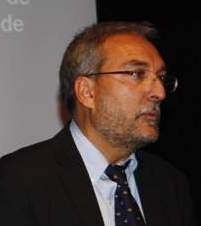
Professor of Ancient History at the University of Murcia. His main lines of research are the Byzantine world, the ancient Christianity and Latin epigraphy. He completed his doctoral thesis on The ideological structures of Emperor Justinian in the Codex Iustinianus.
He is the director of the Center for Middle Eastern Studies and Late Antiquity – CEPOAT. He is also the director of the series: Antiquity and Christianity and Murciana Journal of Anthropology.
CEPOAT tab – Academia.edu – Dialnet
Dr. José Antonio Molina Gómez
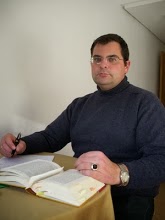
Professor of Ancient History at the University of Murcia. Its main lines of research are the Byzantine world, the ancient Christianity.
He is the director of the magazine: Revista Murciana de Antropología.
CEPOAT tab – Academia.edu – Dialnet – Blog
Mr. José Antonio Zapata Parra
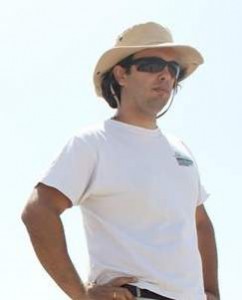
Graduate in History. University of Murcia. Master in Heritage Restoration. Polytechnic University of Cartagena, 2004. Master in Applied Archaeology, University of Murcia, 2010. Work experience: Professional Archaeologist Autonomous between 2000 and 2008. Municipal Archaeologist of the City of Mula, from 2008 to the present.
Mr. Francisco Peñalver Aroca
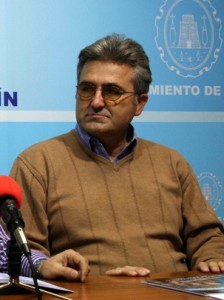
Graduate in Ancient History and Archaeology from the University of Murcia. Director of Archaeological Museum of Cehegín and professional archaeologist.
Mr. José Javier Martínez García
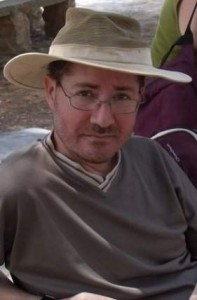
Graduate in Ancient History and Archaeology in the University of Murcia. Graduate in Anthropology in Catholic University of Murcia. Doctoral Course: Urban Life and urbanism in the Mediterranean area, Master in Science in GIS, Master in Applied Archaeology, Master Teacher Education and Master in Egyptology.
He has participated as Technical Director in several excavations of urgency and is currently involved in various international projects like Oxyrhynchus (Egypt) or Heracleópolis Magna (Egypt), Julia Valentia (Morocco) Modular Project and national project as Carteia, Baelo Claudia, Coimbra del Barrancho Ancho, Roman Bath of Fortuna, Villaricos, Begastri and Mazarrón Phoenician.
CEPOAT tab – Academia.edu – Facebook
Free Time
Sunday is a day off, so all students can do any activity that interests them such as visiting places in the neighborhood at their own cost or simply rest by the pool.
Example:
– Roman Villa of Los Cantos.
– Archaeological place of La Encarnación.
Seminars
Throughout the campaign the archaeologists will prepare training seminars in archeology, methodology, GIS, photogrammetry, drawing of ceramics, materials inventory, etc in rotating groups for classes with groups of up to 5 people.
All the information will be arranged for students in our Virtual Classroom before, during and after training.
Seminars and workshops:
– Introduction to Total Station

– Introduction to archaeological field drawing
– Introduction to Kite Aerial Photography – KAP
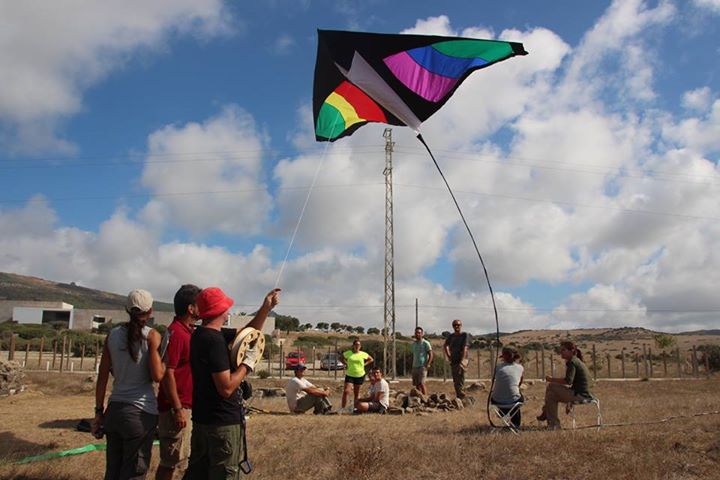 |
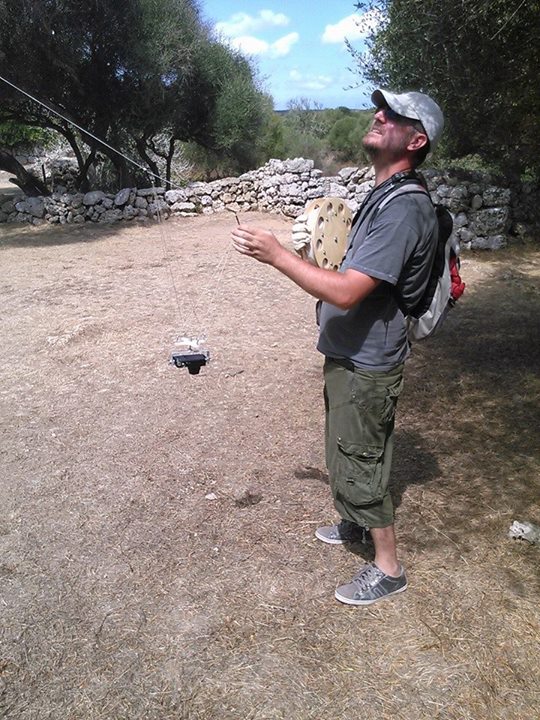 |
-Introduction to stratigraphy with Harris Matrix methodology.

– Introduction to drawing materials

– Introduction to inventory in Data Base software.

– Introduction to GIS with software QGIS.
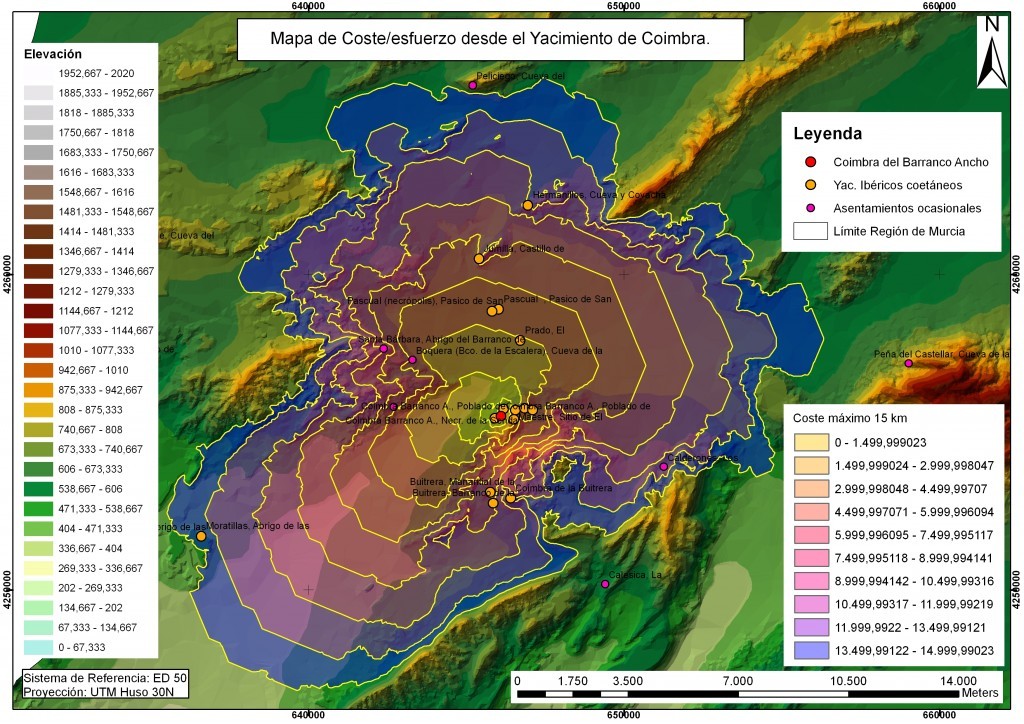
– Introduction to CAD with software Draftsight
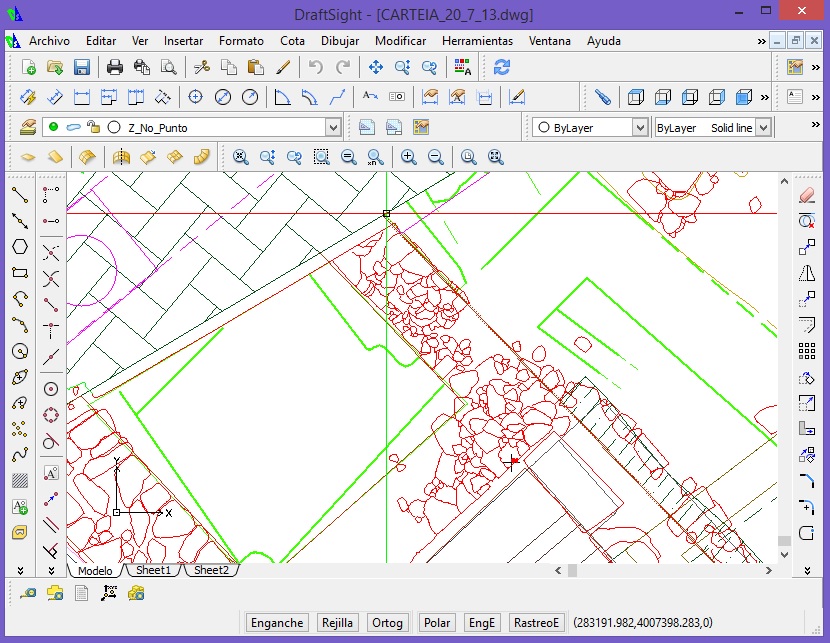
– Introduction to Photogrammetry.

